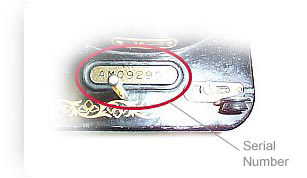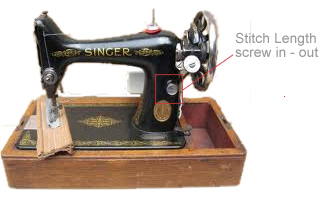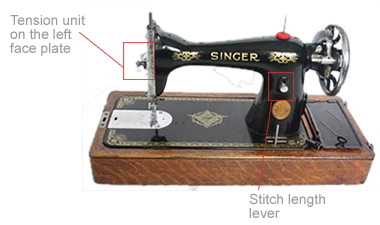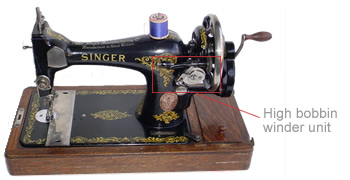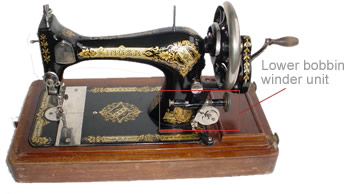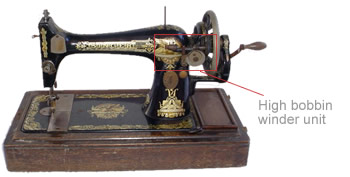We use cookies to make your experience better. To comply with the new e-Privacy directive, we need to ask for your consent to set the cookies. You can manage your cookie settings via your browser setting at any time. Learn more about how we use cookies.
Find sewing machine model number from serial number
Find sewing machine model number from serial number.
We are often are asked for sewing machine parts to fit a Singer F1234567. The problem is this long number is the serial number and we need the machine model number to be able to help with parts, feet, needles etc. There is no reference charts available to tell us the exact model number from it's serial number. However, hopefully this page will help identify your sewing machine model number in conjunction with the other details we have available relating to sewing machine serial numbers..!
How to Identify an old machine without a serial number..?
If your sewing machine does not have a model number, but has a serial number similar in location to the image above, use the images below to help identify the sewing machine model number.
The Singer 99k sewing machine is small in size measuring only 12-1/2" wide, this image shows an early version the 99K (99K21 - 26) made between 1924 to 1954. Originally it may have been hand operated.
The stitch length was adjusted via a screw and the machine did not stitch backwards.
Later versions 99K31 had a stitch length up-down lever with reverse stitch and numbered tension dial - Year 1955
The Singer 15K is always recognised by its tension unit being on the left face of the machine.
Its bobbin had to be inserted into a bobbin case, then the case was inserted into the machine vertically to the left of the needle. When threading the needle it had to be threaded from left to right.
The machine in the image had a small type stitch length, later varieties had the stitch length lever protruding out from a large round numbered disc.
The Singer 15K was manufactured over many years from 1910 - 1964, then reproduced again in 1982 called the Singer 15N.
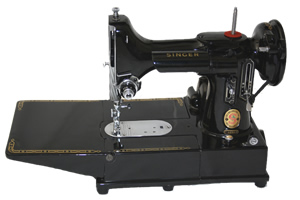
Both the 222K and 221K were tiny machines known as the original Singer Featherweight machines. The light aluminium frame was only 9-3/4" wide, even with the fabric rest down it still was only 14-1/2"....!
I'm sure its still the smallest adult sewing machine ever produced. Its manufacturing year was 1955 to 1964
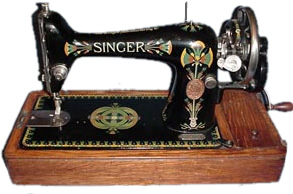
The Singer 66K is the large version of the Singer 99K. Here the image shows a lovely 66K about 1920, originally may have been hand, electric or treadle operated. It was manufactured between 1907 to 1920 the early machines were only Black and Gold with no colour.
The 66K has a bed size of 14-1/2" so is much wider than the 99K
The Singer 28K had what was called a vibrating shuttle or boat shuttle or bullet shuttle... the long bobbin/shuttle was inserted into its case which looked like a bullet, then the case was located into the machine and lay in a frame that looked like a boat hull. When the machine was running it most likely was quite noisy because the shuttle moved forward and backwards at great speed, at times it made the machine vibrate.
The Singer 28K was small at only 12-1/2" bed size and had its bobbin winder located high-up near the hand wheel. Year 1885.
The Singer 27K was a larger version of the 28K, except it had its bobbin winder located lower.
The Singer 27K was large bed at 14-1/2". Year 1885.
Singer 127K sewing machine was very similar to the 28K. But the 127K was manufactured years later at around 1912.
The 127K had its bobbin winder in a high position and had the same type of vibrating shuttle or sometimes called boat shuttle or even bullet shuttle...! It had a larger bed size at 14-1/2"
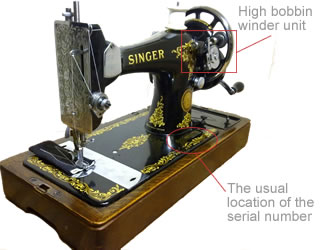
The Singer model 128K also had the vibrating type shuttle.
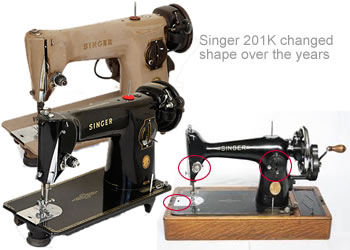
The Singer 201K was cast iron in Black with a round neck body, also made with an Aluminium body which had a square neck. The Aluminium body machines were made in Black/Gold, Beige or Beige/Brown. First introduced in 1935 and continued in production up until 1962
Despite the differing body shapes and apart from it's smoothness, the 201K can be recognised by the large disc with the stitch length lever protruding from it. The tension unit was directly in front on the needle which in turn threaded from right to left. The slide plate (to access the bobbin) had a small oblong hole which aided whilst sliding the slide plate to the left to view the bobbin.
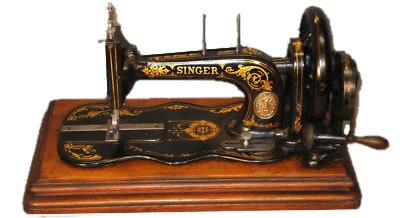
On more modern sewing machines that may be have a plastic shell.
Finding the model number should be much more simple. The model number will be printed on the plate at the back, side or even on the front of the sewing machine. It will usually be a 3 or 4 digit number. However, the serial number may start with a letter. Some sewing machine may have a name EG. Concerto, Merrit or Samba. This is usually enough for us to be able to gather the correct parts and accessories you require, for your sewing machine.


